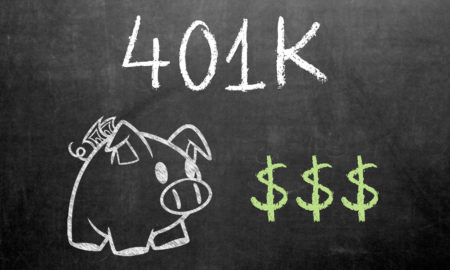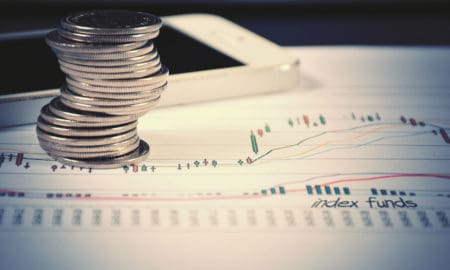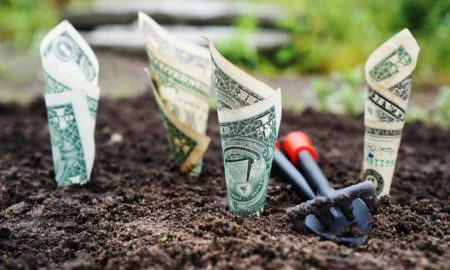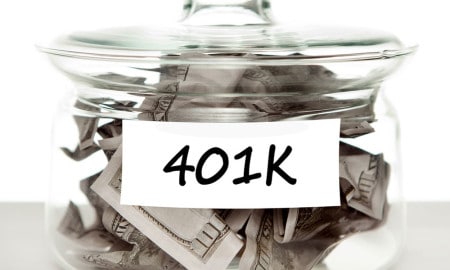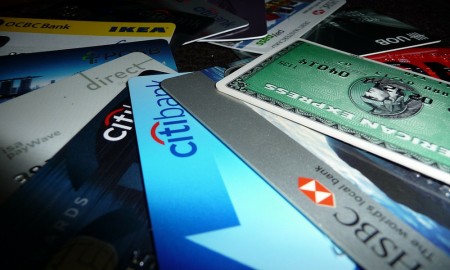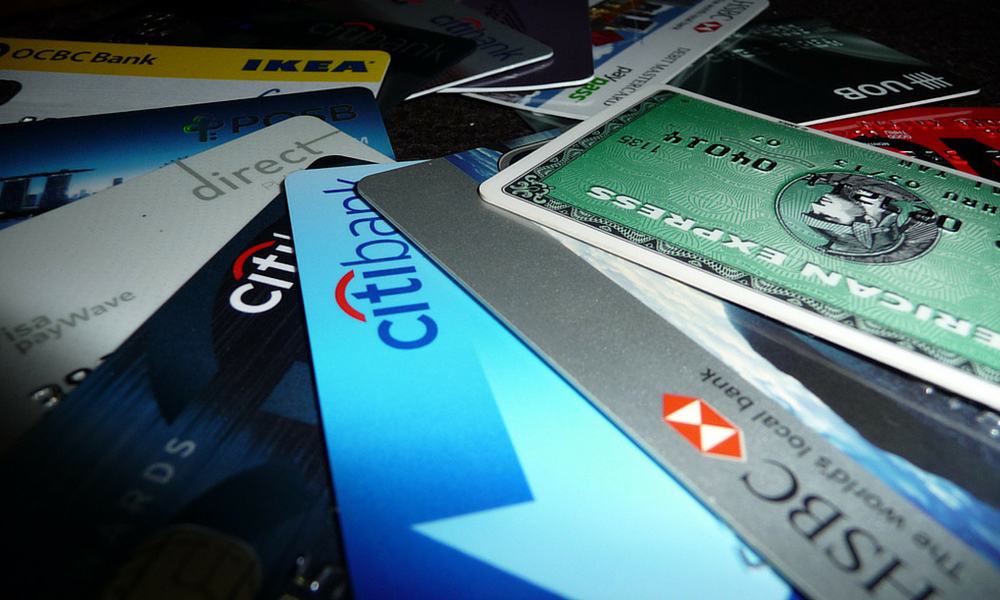

According to the 2015 American Household Credit Card Debt study from NerdWallet, the average indebted household carried $15,355 in credit card debt in 2015.
Even as a dispassionate observer, that is a truly astounding figure to behold. But how do you think it would feel if you carried all that debt? Would you attack it with fervor, or let it grow by leaps and bounds without a care in the world?
Since you’re reading an investing website, let’s assume you want to pay it off and tell your lenders to kick dirt. That’s amazing if it’s true, but it won’t come easy.
Most of the time, this kind of effort requires buckling down on your spending, creating a budgeting plan that works, and saying “no” to yourself much more often than you want.
Further, some individuals also turn to banking products – including personal loans – to (hopefully) hasten the process towards debt freedom by saving money on interest.
But, is using a personal loan to pay off credit cards really a good idea?
Below, the experts weigh in.
Should You Use a Personal Loan to Pay Off Credit Cards?
Anthony Davenport, Founder & President of Regal Financial, says there are definitely times when a personal loan might be a smart move.
For starters, even just an average credit score can potentially get you a lower interest rate on a personal loan compared to switching credit cards.
By paying a lower APR, or annual percentage rate, you’ll save money on your monthly payments.
But even better – if you keep making the same monthly payment on your new, lower-cost personal loan, you could potentially become debt-free sooner because more of your monthly payment goes towards the loan principal. Now, that’s a winning scenario.
Still, that’s not the only reason personal loans can be advantageous.
You Can’t Pay Off Debt Without An End Date
“Personal loans typically have an end-date meaning you’ll know exactly when you’ll be free of debt,” notes Davenport, whereas credit card companies are perfectly willing to let that revolving balance go on forever if you keep using your card.
That’s a really good point and one anyone should consider if they want to pay off their credit cards for good. Whether you take out a personal loan to pay off your credit cards or not, your actual balances won’t shrink until you stop using your card for charges you can’t pay off right away.
And if you’re simply looking to consolidate your debts, a personal loan with a low interest rate might offer the perfect solution.
“The key is to do some research and find a personal loan that comes with the lowest interest rate possible,” says Matthew Coan of online loan resource Casavvy.
According to Coan, the best solution to paying off credit card debt is to eliminate interest as much as possible. “If you can find a lender that will give you a personal loan with an interest rate that is less than you credit card interest rate then it is a better option.”
You can visit a peer-to-peer lender like Sofi quickly find out what rate you qualify for. As of May 25, 2016, rates start at an attractive 4.74%, plus you get a bonus $100 upon approval when you apply through our link.
Other Ways To Reduce Your Credit Card Interest Rates
While a personal loan might work, are other less-drastic banking products that could help you get out of debt even faster. The short list includes 0% APR or balance transfer cards – a special type of credit card that offers 0% APR – as in, zero interest – for a limited time.
While these products vary in their offerings, a good 0% APR credit card comparison site can help you search for the best card for your needs.
The key to making this work is knowing and understanding your 0% APR introductory period so you can (hopefully) pay down a substantial amount of your credit card debts during this time.
Typically, these cards let you make interest-free payments for anywhere from 12-18 months, but there is a caveat.
“Afterwards, the rates will dramatically increase,” says Frank Natta of Loan Solutions PH.
That’s why 0% APR cards are not a long-term fix, says Natta. If you can’t pay off your debts, you’ll be back to where you started within 12 to 18 months. And if you haven’t paid down a substantial portion of your debt during that timeframe, you could be even worse off than where you started.
A third alternative to personal loans – the HELOC, or Home Equity Line of Credit – depends on whether or not you own your own home as well as how much equity you have. “Usually HELOCs are based on the prime rate and will have lower interest rates than credit cards,” says Jerry D. Mitchell II of Incite Wealth Management LLC.
If your HELOC comes with a variable interest rate and rates surge for some reason, however, you could end up paying far more than you planned. This is still a good option to consider, but it should be only be pursued with caution.
The Only Way to Become Debt-Free and Stay That Way
While it’s true that any number of banking products can help individuals save money in the short-term, none of them will have a lasting impact if we don’t change our underlying spending habits.
That’s right – the only way to craft a debt-free lifestyle that lasts is the old-fashioned way – learn to live within your means and stop using credit cards to fund a lifestyle you can’t afford.
Sadly, most people don’t want to hear this advice. We’re all looking for something or somebody else to save us, whether that’s a personal loan, a balance transfer credit card, or a lottery ticket.
But the real solution to the problem of too much credit card debt lies within. To create and enjoy debt-free lifestyles we can be proud of, we have to stop looking outward and find a way to change ourselves.
To enjoy debt-free lifestyles we have to stop looking outward and find a way to change ourselves Click To Tweet5 Ways to Improve Your Finances While You Pay Off Debt
Personal loans and balance transfer cards are tools that can help us get out of debt faster, but the outcome of our efforts will depend on whether we get to the crux of the problem and control our spending.
If you’re ready to put everything on the line to get out of debt and stay out of debt, here are some tips that can help:
1. If you take out a personal loan to pay down credit cards, stop using your credit cards
If you’re using a personal loan to pay off credit cards, you need to stop using your credit cards altogether.
If you don’t, you could easily be back where you started, but actually worse off because you would have a personal loan and credit card debt to pay down.
2. If you transfer balances to a 0% APR credit card, utilize your introductory time to its fullest
Whether you have 12, 16, or 18, months doesn’t really matter; it’s how you use it that counts. With 0% APR for a limited time, you can do some serious damage to your balances if you’re able to focus. Don’t waste that time continuing down the path of self-destruction.
3. Cut your spending and snowball your debts
Overspending is the reason you got into debt in the first place. Conversely, cutting your spending may be the only way out. Look at your last few month’s expenses and figure out where you went overboard, then create an actionable plan to cut back.
4. Create and use a monthly budget
While the “B word” has gotten a bad rap, a monthly budget is really nothing more than a plan for the money you earn. By creating a budget based on your real income and planned expenses, you can carefully plan how to spend your money and cut down on waste.
Better yet, the “extra” money you uncover can be used to pay down your debts even faster.
5. Build an emergency fund you can count on
A Bankrate study from 2015 showed that more than 60 percent of Americans lacked an emergency fund.
Sadly, this is how many people get into debt in the first place; without extra cash to cover life’s unexpected expenses, it’s easy to charge more on your card than you can afford to pay back. If you don’t want to be a statistics, you should strive to have 3-6 month’s expenses set aside just for emergencies.
Final Thoughts
While a personal loan can seem like the ticket out of debt, it won’t really help unless you change your ways. And the same can be said about a 0% APR credit card or even a HELOC; if you don’t learn to control your spending, you’ll end up back where you started.
Paying off credit card debt for good is a noble goal, and it’s one with benefits that can last a lifetime. A banking product can aid the process, but only you can change the habits that got you in debt in the first place.

